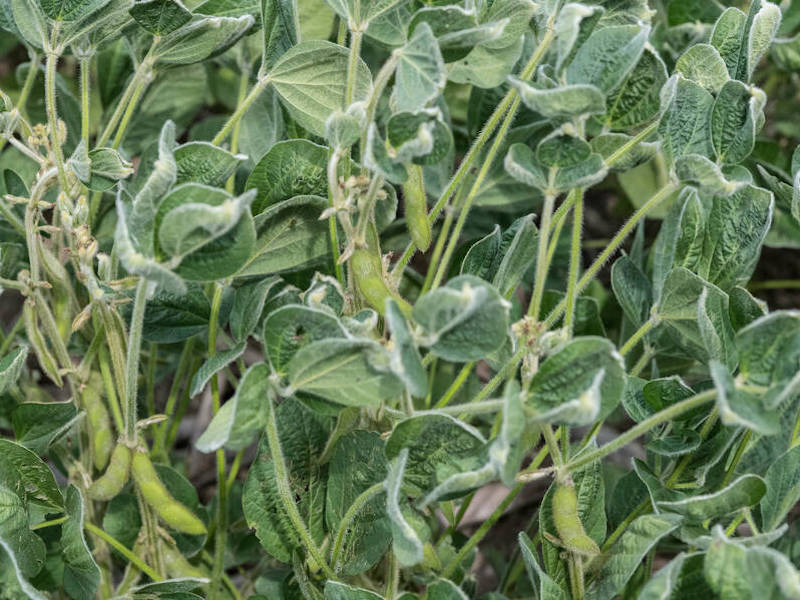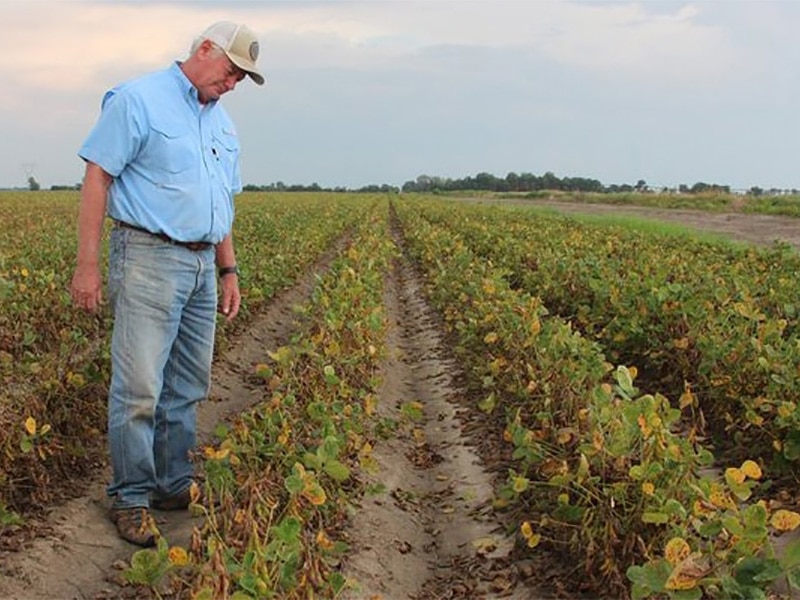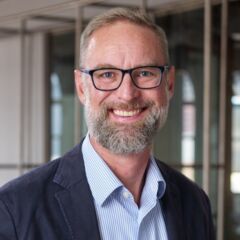DICAMBA DRIFT LAWSUITS
Dicamba is a powerful herbicide that was previously not permitted for direct application on crops because of its toxicity and tendency to move off-site or drift and potentially harm neighboring farms, crops, and plants. However, farmers have sprayed the herbicide Roundup for so long that some weeds are now resistant to glyphosate, its primary active chemical ingredient. As a result, farmers have turned to dicamba to kill these new “super weeds,” which now affect more than two-thirds of U.S. farm acres (61 million acres).
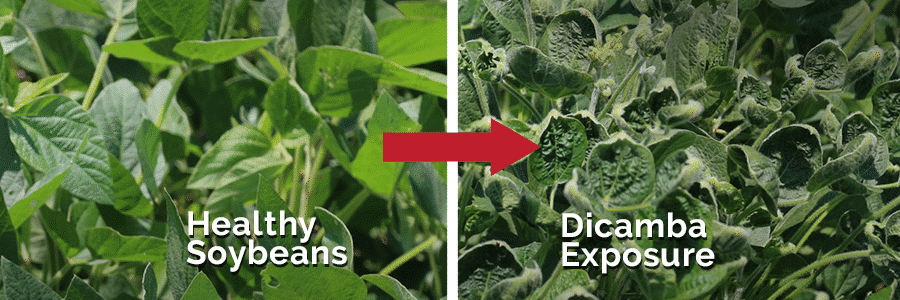
Dicamba is more powerful than glyphosate-based herbicides like Monsanto’s Roundup, which farmers used before “super weeds” developed. Farms not planted with crops genetically modified to resist dicamba are extremely vulnerable to damage from the herbicide.
WHAT IS THE ALLEGED PROBLEM WITH DICAMBA?
In order to combat the problem of Roundup-resistant “super weeds,” manufacturers developed new strains of soybeans and cotton that would be resistant to dicamba. However, the EPA had serious concerns about the proposed new uses for dicamba, which had long been known to be highly volatile and uncontrollable. The EPA delayed approval of the new dicamba formulations for several years, due to its concerns about the chemical’s propensity for off-site movement and the significant harm that it might pose to farmers and neighboring landowners. It approved three new formulations of dicamba for the 2017 growing season, which were supposedly less likely to be harmful than prior versions of dicamba:
- XtendiMax by Monsanto
- Engenia by BASF
- Fexapan by Dupont
However, these dicamba formulations were introduced to the market without independent rigorous testing. “As a result, millions of acres of farmland have been damaged in a real life science experiment conducted by Monsanto and the other manufacturers of dicamba at the farmers’ expense,” Peiffer Wolf attorney Paul Lesko stated. Dicamba was approved for over-the-top application in November, 2016; this resulted in a marked increase in dicamba utilization, leading to estimated damages of millions of acres of non-target plants and crops.
DICAMBA CROP & PLANT DAMAGE
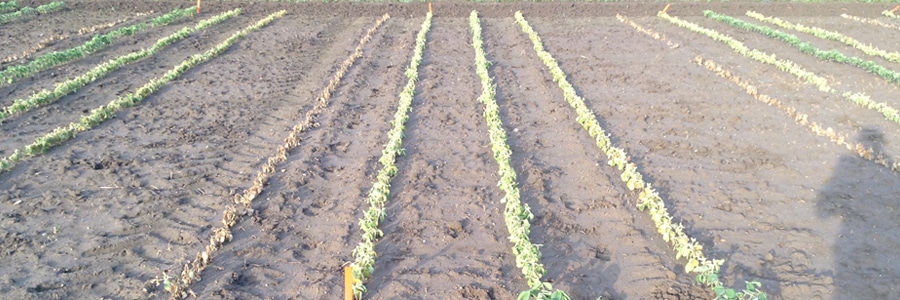
There have been reports of dicamba damaging crops and plants in Missouri, Arkansas, Tennessee, Mississippi, Illinois, Indiana, Iowa, Minnesota, North Dakota, South Dakota, Kansas, Nebraska, Kentucky, Ohio, North Carolina, Virginia, Louisiana, Alabama, Georgia, Michigan, Pennsylvania, and Wisconsin. It is estimated that approximately 3.1 million acres of soybeans have been damaged by dicamba already.
Through surveys of state departments of agriculture, the findings identify at least 2,242 official investigations into dicamba damage nationwide, as of August 10, 2017. Estimates from state extension weed scientists, meanwhile, show suspected dicamba damage has affected at least 3.1 million acres of soybeans overall — an area approaching the size of Connecticut.
There have been a record number of complaints about off-target dicamba movement in multiple States. In Arkansas alone, there have been at least 876 complaints made by farmers to the Arkansas Plant Board. Arkansas and Missouri enacted bans on the use of dicamba, and several other States added additional restrictions in the middle of the growing season. Additionally, valuable crops like tomatoes, tobacco, melons, pumpkins, and fruits have also been damaged by dicamba, as well as standing timber and ornamentals.
FARMERS & LANDOWNERS SEEK JUSTICE THROUGH LAWSUITS
While local authorities have leveled some fines against farmers who misuse dicamba, these fines often run from just $200 to $1,000—a meager number that pales in comparison to the damage done by dicamba misuse. In some cases, the culpable party just received a warning. According to Modern Farmer, farmers impacted by dicamba will lose an estimated 10 to 30 percent of their annual crop yield. Experts estimate that dicamba has already adversely affected more than 3 million acres of farmland.
Because these fines are so minimal, and because Monsanto, BASF and DuPont are unlikely to face criminal charges, many farmers in Arkansas and neighboring states have filed lawsuits seeking restitution for the damage done to their crops or reduced crop yields. These lawsuits are not aimed against their neighboring farmers, but rather herbicide manufacturers like Monsanto, DuPont, and BASF.
SIGNS OF DICAMBA CROP & PLANT DAMAGE
According to the Purdue Plant & Pest Diagnostic Laboratory, signs of dicamba plant & crop damage may include:
- Twisted leaves
- Upward cupping on leaves
- Narrow, strap-like leaves on the youngest growth
- Aboveground roots on the stems of some annual flowers
The Purdue laboratory notes that these types of herbicide are “quite prone to drift and volatilization.” Its report also emphasizes that several other culprits can cause similar types of damage, so be sure to rule out the following potential causes before determining that dicamba is responsible:
- Mite, insect, or disease damage
- Adverse weather
- Soil compaction
- Drought
- Root stress
- Improper soil pH
- Misapplied fertilizers
- Genetic mutations
- Road salt
DICAMBA LAWSUIT ELIGIBILITY
To qualify for a dicamba lawsuit, you must be a commercial farmer or landowner whose crop yield has suffered losses because of dicamba in 2015, 2016 or 2017. Dicamba herbicides include:
- XtendiMax by Monsanto
- Engenia by BASF
- Fexapan by Dupont
Anyone with suspected dicamba damage from 2015, 2016 or 2017 are encouraged to contact attorney Daniel Carr for more information or a FREE Consultation by calling (314) 669-3600, filling out an online contact form, or emailing Daniel directly at [email protected] today.
DICAMBA IN THE NEWS
Yes. Please call us or use our contact form to request a Free Case Evaluation. We have a national team of attorneys and staff who look forward to speaking with you.
Typically, we represent clients on contingency fee agreements. If we take your case under a contingency fee arrangement, you won’t owe our firm any legal fees unless we are able to recover money for you.
Our contingency fee agreements are usually based on a percentage of the amount we recover for our clients. The contingency fee amount is determined by the type of case, our estimate of how long it will take to resolve your case, and our estimate of the litigation costs we will advance in your case. Each engagement agreement includes the details of the fee arrangement. Questions about our fee agreements are welcomed and encouraged.
In most litigation matters, it is extremely difficult – practically impossible – to predict how long it will take to resolve a particular case. Every case is different, and we will do our best to provide you with an estimate based on your case and our experience with similar cases. Moreover, we will do our best to keep you updated and manage expectations along the way.
We handle cases that change lives. Contact us today for a FREE consultation.


